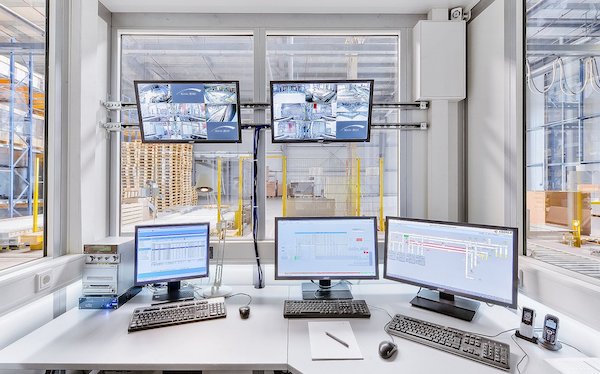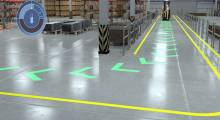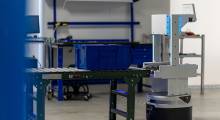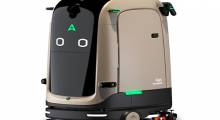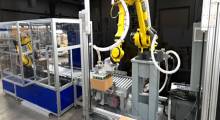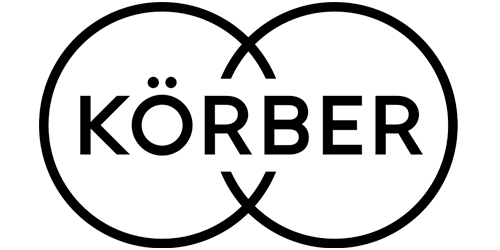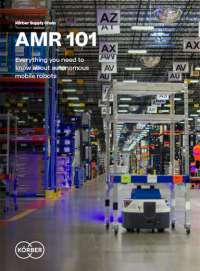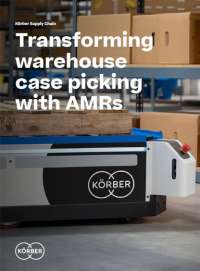In today's fast-paced market, businesses want to improve their warehouse operations to meet customer demands and remain competitive. A warehouse management system, or WMS, is just one of a number of ways to take on automation and optimization.
The exponential advancement in robotics has revolutionized the way we store and transport goods, transforming the sprawling warehouses of today into hubs of high-tech innovation. In 2021, Amazon had around 350,000 automated mobile drive units in its warehouses.
Over the coming years, most warehouses will have high levels of automation. It is already a significant market, representing over $10 billion in annual global spending, bound to grow to $51 billion by 2030, according to Acumen Research & Consulting. The message is clear: Don't get left behind, so use automation to improve your warehouse operations.
Warehouse managers increasingly rely on automation to respond to the growing demand for prompt and precise order fulfillment. They commonly emply three types of software:
- Warehouse management systems (WMS)
- Warehouse control systems (WCS)
- Warehouse execution systems (WES)
Each of these systems serves a specific niche in automating operations, and choosing the right one can make all the difference in achieving cost-effectiveness, efficiency, and accuracy.
Let's explore the differences between WMS, WCS, and WES to help you address your warehousing needs.
Warehouse management systems
Warehouse managers use warehouse management systems to manage the flow of goods and packages throughout a facility and to take care of inbound and outbound processes. A WMS can assign tasks to workers and help optimize a warehouse's layout to maximize the use of the storage space.
A WMS can track inventory levels and the movement of items in real time, identifying areas of the distribution center or warehouse that are underutilized or overcrowded. It can then suggest changes to the layout and recommend placement of inventory items in new locations.
Enterprises can use a WMS to automate and streamline their end-to-end operations, from receiving to the final shipping of the goods out of the warehouse.
Tecsys' Elite WMS is an example of a WMS that is designed to eliminate inefficiencies, improve order accuracy, and reduce operating costs while attaining high service levels for inventory management.
Alternatively, Consafe Logistics’s AstroWMS is intended to optimize all manual and automated warehouse processes.
Although WMSes mainly manage inventory movement and storage, note that they can work with robotics to further improve warehouse productivity:
- Automated storage and retrieval systems (ASRS): When integrated with a WMS, they can optimize the placement and retrieval of goods.
- Autonomous mobile robots (AMRs): A WMS can direct AMRs to specific locations based on real-time data.
- Robotic pick-and-place systems: Based on the order and inventory data from the WMS, such robots can help with picking items.
If automation is required, then additional software may have to be integrated with the WMS. For example, managers use a combination of WMS and WCS to direct robots to pick products from shelves and deliver them to the packaging area.
Warehouse control systems
A warehouse control system is designed to control all types of automated equipment within a facility, such as conveyors, pickers, and sortation systems. It manages them at reception, sortation, and transport.
A WMS can provide managers information about where the goods are to be delivered, and the WCS simply executes those directions using automation.
The WCS can also optimize the use of this equipment. For example, it may automatically adjust the speed and routing of conveyor systems to optimize the flow of products through the warehouse. It can also move products based on their importance, ensuring that high-priority orders are processed first.
By optimizing the use of material handling equipment, a WCS can increase efficiency, reduce operational costs, and improve the overall performance of the warehouse. Let’s take a look at some examples.
The first example is Körber, whose WCS allows customers to manage and optimize material flow using their entire portfolio of material handling equipment (MHE), rather than individually controlling automation devices. Körber’s WCS is vendor-agnostic, and the German company said it creates a single point of data and communication, as well as provides centralized control and management. It can control all types of conveyor technology, shuttle systems, and ASRS, said Körber.
The second example is Savoye, a French automation company that offers a WCS to manage and supervise all scheduling, synchronization, and routing operations in the warehouse. Savoye’s X-PTS Pick Station offers different modes for different activities — such as picking inventory.
The final example is Zebra Technologies' Fetch Robotics unit, which provides the FetchCore cloud-based WCS software that it said provides complete control of warehouse automation. The software can control a variety of robots, such as Freight1500 robots, which Zebra claimed is a workhorse that can safely transport large and heavy payloads autonomously throughout the warehouse.
Warehouse execution systems
Warehouse execution systems can combine the functionality of a WMS and a WCS. They can coordinate all aspects of warehouse operations, including inventory management, order fulfillment, and the movement of automated vehicles and materials.
WESes promise to optimize the flow of goods through a warehouse, increase productivity, and reduce errors. WES can manage the movement of inventory, from the moment it enters a facility until it is shipped out.
By integrating a WES with robots and automation, warehouse managers can manage resources in real time to get inventory out the door automatically and meet accelerating consumer expectations. In addition, you can link a WES with an old WMS to further optimize operations.
For instance, inVia Robotics offers sophisticated software and a variety of advanced robots. A fleet of inVia Picker AMRs operated by inVia Logic WES can automate picking and autonomously and precisely fulfill orders.
In another case, Dematic offers software that it said dynamically manages inventory, labor, and material handling automation in real time. Its WES manages AMRs, which collaborate with warehouse personnel during the picking, retrieving, replenishment, or transferring of bulk stock.
Also, Honeywell’s Momentum WES utilizes advanced machine learning algorithms and data-driven optimization techniques to solve warehouse automation. The Honeywell Robotics subsidiary offers AMRs from OTTO Motors with Momentum.
How do warehouse systems work with robots?
Here are some specific examples of how warehouse management control (WMC) and other software can work with robotics:
- A WMC system can instruct an ASRS to store and retrieve items within a warehouse. For example, when a customer places an order, the WMC can direct an ASRS to retrieve and transport items to a picking station.
- A WCS can communicate with conveyor systems on which items require transportation and their intended destinations. For example, if an item needs to be moved from one end of the warehouse to another, the WCS can instruct the conveyor system to transport it.
- WESes will work with AMRs such as Locus Origin, which assist with tasks such as picking and packing items. For example, when an order is placed, a WES would direct an AMR to retrieve the needed items from storage and bring them to a packing station.
- Robotic arms integrated with WMCs can pick and pack items. When an order comes in, a WMC, WCS, or WES can tell the robotic arm to pick a particular item from a bin and place it into a shipping box.
- Warehouse software can also work with drones such as those from Verity for inventory management.
Consider the right options
Choosing between a WMS, a WCS, and a WES can be a difficult because the numerous suppliers of these systems offer different functionalities, which often overlap.
When evaluating which system would be best for your warehouse operations, consider these factors:
- If your warehouse is small and has mainly manual processes, then a single system such as a WMS may be sufficient for inventory management, order processing, and labor management.
- If you have a lot of automated equipment in your warehouse, then a WCS may be necessary to manage and control all of it.
- If you have a large warehouse with complex operations, you may need more than one system, such as a combination of a WMS and a WCS.
- If you also need inventory management for a large automated warehouse, a WES may be necessary. It can provide real-time inventory data and manage automated operations. In addition, robots such as Amazon's Sparrow are great fit for a large warehouse. They can automate the product fulfillment process by moving individual items before they get packaged, and they can handle millions of packages daily.
- If you do not want to manage a warehouse yourself, consider outsourcing to companies that offer third-party warehousing facilities.
Evaluate your warehouse's requirements and processe before selecting warehouse software. You should also understand how each system can help to optimize operations and improve overall performance.
A trusted vendor or consultant can help you make an informed decision as you assess your specific needs, goals, budget, and constraints and compare them with the functionality provided by each system.

About the author
Will Schneider is the founder of InsightQuote, a match-making service for business-to-business services, and writes informative posts about fulfillment services at Warehousing And Fulfillment. He is passionate about helping businesses find the right solutions to improve their operations.
Article topics
Email Sign Up

